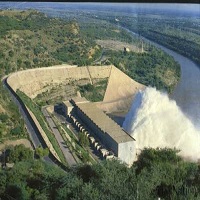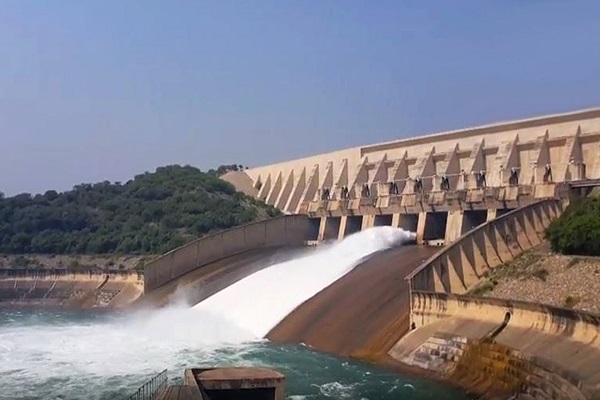The Mangla Dam is a multi-function dam located on the River Jhelum in the Mirpur district of AJK (Azad Jammu & Kashmir), Pakistan. It’s the world’s seventh-largest dam. The Mangla village, which lies at the dam’s mouth, functions as its namesake. The selected contractors of the project were announced in November 1961.
British engineering company ’Binnie and Partners’ has been announced to work as lead inspectors, engineers, and designers for building the dam.
A consortium recognized as ‘Mangla Dam Contractors’ took this project. This consortium included 8-American construction companies sponsored by South San Francisco-based company Guy F. Atkinson. The article carries every detail about the dam, including Mangla Dam History.
| Title | Description |
|---|---|
| Information | |
| Location: | Mangla, Azad Jammu & Kashmir |
| Country : | Pakistan |
| Located: | Jhelum River in the Mirpur District of Jammu & Kashmir, Pakistan |
| Status : | Operational |
| Type: | Embankment dam |
| Local Language Name: | منگلا بند |
| Coordinates : | 33.142083°N 73.645015°E |
| Construction began : | 1961 |
| Opening date : | 1967 |
| Type of dam : | Embankment dam |
| Impounds : | Jhelum River |
| Height : | 147 m (482 ft) |
| Length : | 3,140 m (10,302 ft) |
| Creates : | Mangla Lake |
| Total capacity : | 9.12 km3 (7,390,000 acre·ft) |
| Surface area : | 97 sq mi (251 km2) |
| Turbines : | 10 x 100 MW |
| Installed capacity : | 1,150 MW (15% overload) , 1,500 MW (max. planned) |
| Constructed Cost: | Rs. 15.587 billion (US$1.473 billion) |
| Funding By: | Funding being provided by the World Bank and the Asian Development Bank |
| Constructed Duration: | Between 1961 and 1967 |
| Components include : | The main embankment, intake embankment, main spillway, emergency spillway, intake structures, 5 tunnels |
| Cubic Yards: | Total of 120 x 106 |
| Award of Contract: | January 20, 1962 |
| First Impounding: | February 21, 1967 |
Table of Contents
Mangla Dam History
In 1960 IWT (Indus Waters Treaty) was signed; according to this treaty, India was awarded rights to the Sutlej, Beas, and Ravi rivers, and Pakistan besides the waters of these three rivers within Pakistani territories, and some financial compensation was granted rights to construct the Indus, Chenab, and Jhelum river basins.
Until 1967, Pakistan’s whole irrigation system was totally dependent on the unchecked flow of the River Indus and its main tributaries.
Issue of Poor Agricultural Production
The agricultural production was very poor for a variety of reasons, the most important being the shortage of water during the crucial growing seasons. This issue arose from seasonal fluctuations inflow of the river due to monsoons and the lack of storage facilities to store large quantities of excess water during times of heavy river discharge.
The Mangla Dam was among 2-dams built to overcome this shortcoming and reinforce the irrigation country’s infrastructure as a part of the Indus Basin Program, while the 2nd was the Tarbela Dam located on the River Indus in Swabi, KPK.
Mangla Dam Construction
Cost
The dam was built at the cost of Rupees 15.587 billion, ADB (Asian Development Bank) and World Bank-funded for the dam.
Reservoir
The dam was built between 1961 & 1965 across the river Jhelum in the Mirpur district of AJK (Azad Jammu & Kashmir), some 108 km southeast of Islamabad. The components of the Mangla Dam include intake structures, power station, five tunnels, emergency spillway, main spillway, intake embankment, main embankment, and a reservoir.
Apart from the main dam, Sukian dyke seventeen-thousand feet long and a small dam named the Jari Dam to obstruct the Jari Nala-had to be built eleven miles outside the new town of Mirpur. There were 120 x 106 yd3 (cubic yards) of the trench for the reservoir, while the total fill was 142 x 106 yd3 & concrete to 1.96 x 106 yd3, respectively.
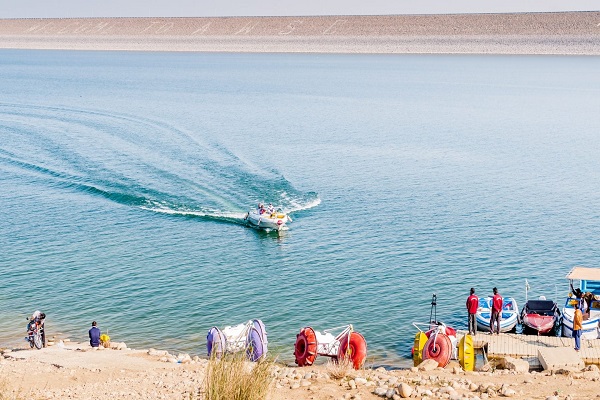
Embankment Dimensions
The maximum embankment height above the core ditch is four-hundred and fifty-four feet and is 8,400 feet long. The dock is a type of earth filler with B-type sandstone. Grit is added to shoulders. The Sukian Dam is earth-filled with sandstone of B-type as a core material, and A-type limestone is added to the shoulders. The overall height of the intake bank above the main trench is 144 feet and 16,900 feet long.
Construction of Power House
The powerhouse, consisting of generators, transformers, and turbines, has been built at the edge of the intake dike at a land surface elevation of eight-hundred- and sixty-five-foot SPD. Five tunnels with a diameter of 30/26 feet provide the water to the power station. Each tunnel is constructed to provide power to 2-generating units.
Turbines
There are 10-Francis turbines in this powerhouse. All of these turbines have a production of 138,00 bhp and a rated head of two-hundred and ninety-five ft of water. The 1st 4-turbines were made by Mitsubishi Electric and were fitted in 1969; 5 & 6 turbines were manufactured by ČKD Blansko and were fitted in 1974; 7-8 turbines were made by ACEC, Belgium.
All turbines are linked to generators with a generation potential of 100 Megawatt. Hitachi, Japan supplied generators for 1–4 and 7–8 turbines, whereas Škoda generators are linked to 5–6 & 9-10 turbines. In turn, these generators are connected to 3-phase transformers.
Displacement and Resettlement of People
The Pakistani government decided to pay a royalty to the AJK (Azad Jammu and Kashmir) government for using the electricity and water produced by the dam. Over two-hundred and eighty villages and towns of Dadyal and Mirpur have been flooded, and more than 110,000 inhabitants were affected as a consequence of the dam’s construction.
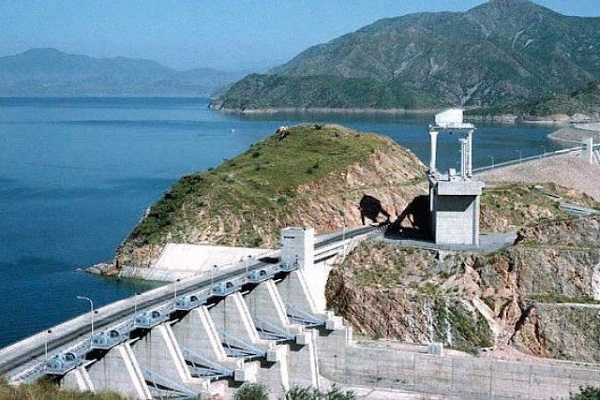
Financial Compensation and Work Permits
Most of those harmed by the dam construction were granted work visas for Britain by the Pakistani government, and as an outcome, in several cities in the United Kingdom, most of the Pakistani population originates from the Mirpur-Dadyal region of Azad Kashmir.
Almost 747,000 Mirpuris reside in the U.K., and about seventy percent of the British-Pakistani population is formed by the British-Mirpuri population. The ratio is higher in northern towns and cities. In Bradford, it is reported that about three-quarters of the populace comes from Mirpur.
Many people took up employment in the steel and textile mills owing to the severe labor shortage in England.
Operation
This project was specifically designed to maximize the volume of water that can be utilized for irrigation purposes from the flow of River Jhelum & its branches, and its secondary purpose was to produce electrical energy from irrigation discharges at the reservoir’s artificial head.
Damage to Dam
On 5th Dec 1971, the dam was severely damaged by an Indian Air Force bombing raid during the 1971 India-Pakistani War. This attack was in opposition to the international agreement that there should be no attacks on larger water reservoirs. Resultantly, the hydro project became briefly out of operation.
Output of Dam
From the information collected in 2009, since its inception, the project has produced 183,551 billion low-cost Hydroelectric energy units. The annual output from 2008 to 2009 was 4797,425-million Kilowatt-hours, whereas the station served the highest load of 1150 Megawatts, which was 8.18 percent of the peak of the total system of WAPDA.
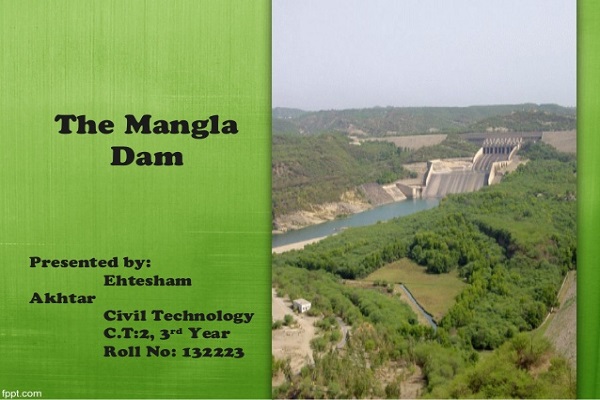
Reduction in Storage Capacity
On 1st Sep 2013, the level of water in Dam reached a height of 1237.15 ft against the highest storage level of 1,242 ft. The initial reservoir had a storage capacity of almost 7.25 billion m3 that decreased to 5.77 billion cubic meters in 2005 because of sedimentation.
Mangla Dam Elevation Project
To overcome this problem, the Mangla Dam elevation Project was launched in 2004, and the spillway, main dam, and associated works got completed at the cost of Rupees. 101,384 billion in 2009. This project raised the height of the dam from thirty feet to four-hundred and eighty-two feet and thereby raised the level of overall water conservation from 1202 ft-1242 ft.
Benefits of Expansion Project
This raised the storage capacity of the dam from 5.56 billion m3-9.12 billion m3. In addition, it is predicted that after increasing the Dam’s height by thirty ft, the powerhouse would produce an additional twelve percent of energy annually, increasing its installed capacity from thousand Megawatts to 1,120 Megawatts.
Effect of Expansion Project on Inhabitants
However, the Dam Raising Program has troubled over forty-thousand residents residing in the area near the dam. Total compensation and relocation costs amounted to seventy billion rupees. The resettlement plan includes the development of the City of New Mirpur,4-satellite towns, the Bypass of Mirpur, and 2-bridges across Bong Canal and Jehlum River.
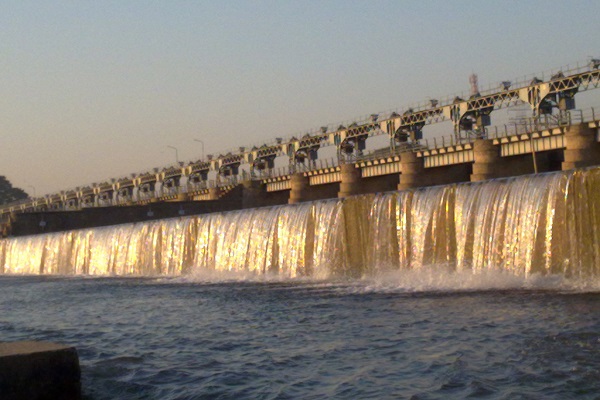
Powerhouse Project
In Nov 2012, the USA gave a $150 million grant to expand the powerhouse of Mangla Dam. Under the initiative, $400 million rupees would be invested in the powerhouse, which is expected to generate increased production/output for the next forty years.
Upon completion, the project would increase the Mangla Dam’s power generating potential to 1,310 Megawatts from the current 1000 Megawatts capacity. The dam had been expanded further in Pervez Musharraf’s era, but it didn’t increase the electricity generating capacity.
Social Media Handle
https://www.facebook.com/ManglaDamOfficial/
